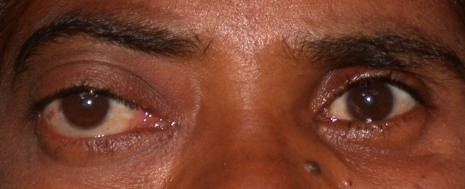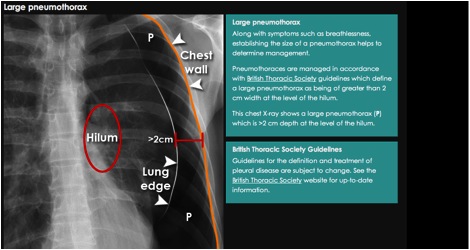Discussion by Mirjana Dimovska, MD
Case 1
45 year old female presents to the emergency department with intense bilateral hand pain after a glass etching arts and crafts project this morning. The patient states that she thinks she got some of the solution on the palms of her hands. On visual inspection, skin has corrugated appearance.
1. Which of the following electrolyte abnormality is most likely to lead to adverse effects in this patient?
A. hyponatermia
B. hypocalcemia
C. hypernatremia
D. hypokalemia
Case 2
A 56 year old dissolved male is brought into the emergency department via EMS. The patient smells strongly of alcohol and was noted to be sleeping on a metallic park bench during a thunderstorm. Upon exam, the patient has a feathering patterned burn to the right upper extremity and chest. GCS is 12 however patient is confused and unable to provide a history.
2. Which of the following physical exam findings is most likely?
A. Muscle necrosis distant to the site of injury
B. Compartment syndrome in RUE
C. Kissing burns
D. Tympanic membrane rupture
Case 3
A 3 year old child is brought in by his mother for mental status changes. The patient’s past medical history is significant for a recent emergency room visit for treatment of an extensive scald burn that the patient sustained while trying to lift a bowl of ramen noodles. On exam, the child is cyanotic, short of breath and lethargic. He has superficial scald burns on the left shoulder and upper back covered in ointment.
3. What is the most appropriate treatment plan?
A. Administration of methylene blue and supplemental O2
B. Contact child protective services immediately
C. Admit to burn service for debridement and pain control
D. Massive fluid resuscitation and supplemental O2
Bonus Question:
Which of the following does not fulfill criteria for transfer to a burn center?
A. 37 year old male pulled from a house fire with singed nose hairs and DIB
B. 15 year old female with partial thickness burns to the bilateral left upper and lower extremities
C. 6 year old male with full thickness burn to the right arm totaling <5% BSA
D. 52 year old female who sustained a superficial partial thickness grease burn to the right breast while cooking this morning.
Answers:
1. B. Hypocalcemia.
Hydrofluoric acid is a weak acid used in the petroleum industry, however also used for glass etching, as a rust remover and for the cleaning of cement and bricks. The free fluoride ion serves as a cation scavenger, notably for calcium and magnesium. The free fluoride ion can also inhibit the sodium potassium ATPase resulting in hyperkalemia. These electrolyte disturbances can result in QT prolongation, ventricular arrhythmias, hypotension, other badness. Hypocalcemia after a significant exposure is treated with IV calcium gluconate 10% or calcium chloride via central access and warrants admission to telemetry to monitor for arrhythmias. Burns as small as 2.5% BSA can be fatal in a high concentrated hydrofluoric acid exposure.
2. D. Tympanic membrane rupture.
This patient is victim to a lightning injury as evidenced by the feathering patterned burn. Blunt trauma associated with these injuries can result in skull fractures or cervical spine injuries. Consequently, tympanic membrane rupture is a common finding in these victims and can be secondary to a basilar skull fracture or may be the result of a shock wave or direct burn. Otoscopic exam is essential in suspected lightening injury patients as ossicular disruption can cause permanent hearing damage. Choices a-c are most consistent with an electrical injury.
3. A. Administration of methylene blue and supplemental O2.
This child is suffering from acquired methemoglobinemia precipitated by silver sulfadiazine cream. Decontamination with soap and water is recommended along with treatement with methylene blue 1-2mg/kg IV over 5 minutes for patients with symptomatic hypoxia or MethHgb levels >30%. Symptoms include difficulty in breathing, dysrhythmias, seizures, coma. Other adverse affects of silver sulfadiazine include hypersensitivity reactions, neutropenia, leucopenia.
Bonus: D. American Burn Association recommends transfer of the following to a burn center:
1. Partial thickness burns greater than 10% total body surface area (TBSA).
2. Burns that involve the face, hands, feet, genitalia, perineum, or major joints.
3. Third degree burns in any age group.
4. Electrical burns, including lightning injury.
5. Chemical burns.
6. Inhalation injury.
7. Burn injury in patients with preexisting medical disorders that could complicate management, prolong recovery, or affect mortality.
8. Any patient with burns and concomitant trauma (such as fractures) in which the burn injury poses the greatest risk of morbidity or mortality. In such cases, if the trauma poses the greater immediate risk, the patient may be initially stabilized in a trauma center before being transferred to a burn unit. Physician judgment will be necessary in such situations and should be in concert with the regional medical control plan and triage protocols.
9. Burned children in hospitals without qualified personnel or equipment for the care of children.
10. Burn injury in patients who will require special social, emotional, or rehabilitative intervention.
Filed under: Uncategorized | Leave a comment »























